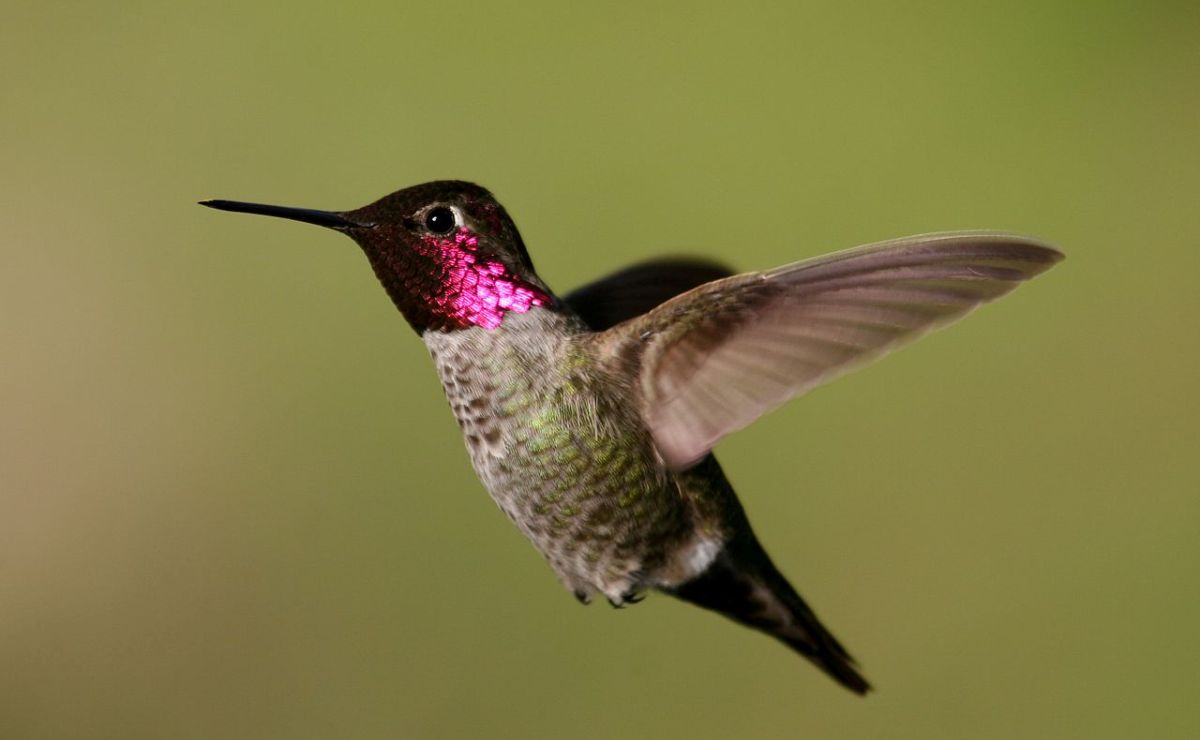Anna’s Hummingbird (Calypte anna) is a stunning species of hummingbird native to the western part of North America.
Their iridescent green plumage and dazzling reddish-pink throats and crowns set them apart from most other hummingbird species.
Their nest is about the size of a walnut, their egg the size of a jellybean, and the birds themselves weigh the same as a nickel.
On this page
Breeding Male
Male Anna’s Hummingbirds have a green back with bronze iridescence, green flanks, a gray underside, and a reddish-pink crown and throat.
Related: How do hummingbirds get their colors?
Without sunlight, its crown and throat may appear gray or dull brown. Its dark tail is forked, and the bird has a pale line above its black eyes.
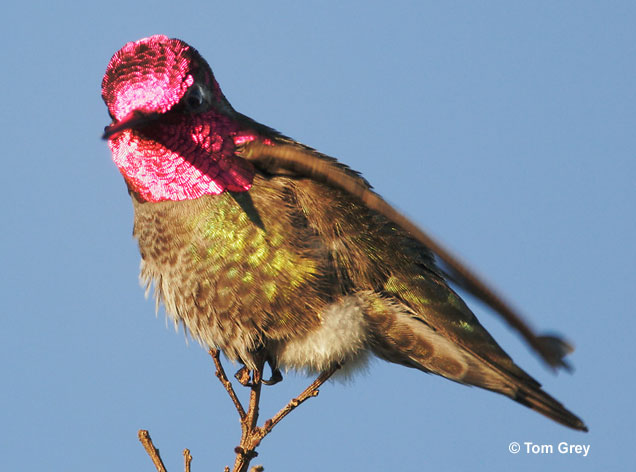
Female
Female Anna’s Hummingbirds have duller plumage than males. Its upperside is metallic green, its flanks dirty green, its underside is gray, and it has reddish or purplish spotting on the throat.
Unlike males, females tend to have a more rounded tail.
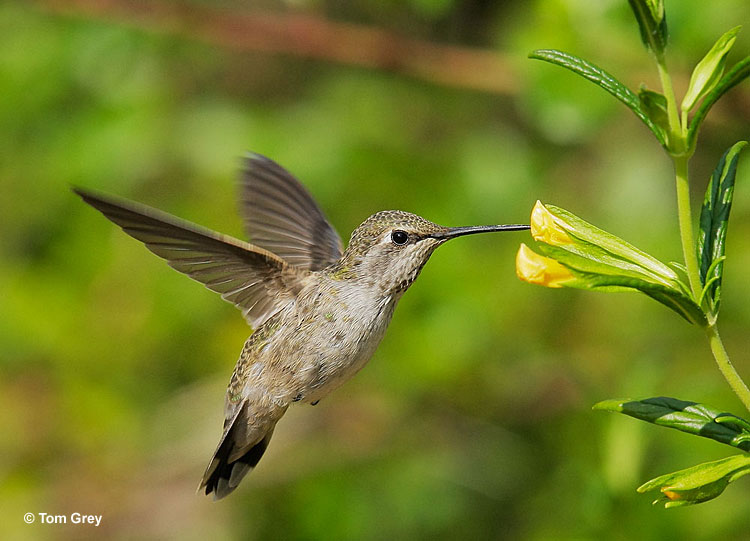
Female Anna’s Hummingbird
Juvenile
Anna’s Hummingbirds may have 2 or even 3 broods a year and lay 2 pure white eggs on average. The female incubates the eggs alone for 14-19 days and the young take their first flight at about 18-23 days after hatching. The young reach independence at around a week or two after hatching.
Juvenile Anna’s Hummingbirds generally resemble females, although there are some variations. Males have reddish or purplish patches on their crowns and throats and have less rounded tails. Juvenile and immature females lack the colorful patches and the overall metallic sheen and their tails are more rounded.
These birds are quite stocky for a hummingbird and grow up to 4 inches in length and weigh around 0.1-0.2 ounces.
Habitat
Anna’s Hummingbird’s habitats are situated in both rural and suburban settings, such as open woods, chaparral, and shrubs but also parks and gardens. They prefer to live around eucalyptus trees.
During the breeding season, males inhabit more open habitats, whereas females live in trees that offer cover and protection.
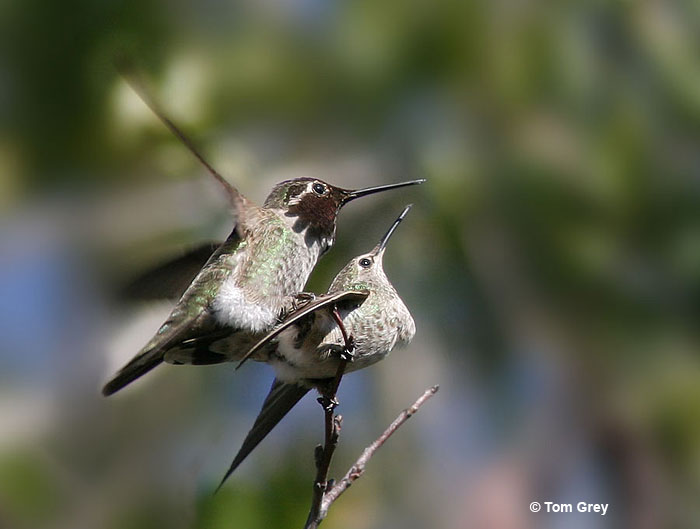
Anna’s Hummingbirds nest in trees or shrubs. The female builds the nest on their own on a horizontal branch 4-25 feet high, preferring eucalyptus, oak, and sycamore trees.
Nests are about one inch tall and under two inches in diameter. It’s a cup made of plant fibers that are interwoven with spider webs and lined with soft materials, such as hair, feathers, or plants.
The mother bird covers the outside of the nest with lichen, moss, leaves, bark, or even paint chips to camouflage it.
Diet
Anna’s Hummingbirds are primarily herbivores and have two sources of plant food. The main component of their diet is flower nectar which they extract by hovering over flowers and extending their tongue into them.
Some of their favorites include currant, eucalyptus, gooseberry, and sage. They may also eat tree sap and visit hummingbird feeders for sugar water.
These hummingbirds feed on small insects as well. They capture them mid-air, snatch them from spider webs, or pluck them from flowers. The primary targets include leaf hoppers, midges, and whiteflies.
Behavior
Anna’s Hummingbirds are quite solitary and territorial, only coming together to mate and even then don’t form pairs. Females build the nest, incubate the eggs, and raise the young on their own.
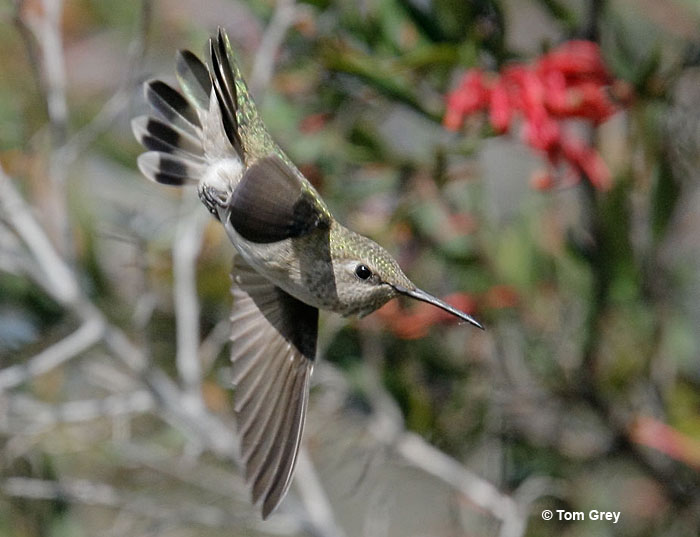
As they’re protective of their territory, they will dive at anything that intrudes on it. If a predator tries to attack a nest, the female will hover in front of the assailant and attack its head and back.
As a defense mechanism, they will also avoid lower food sources and prefer higher flowers and feeders.
Range (and seasonal changes)
Anna’s Hummingbirds range extends along the western coast of North America. They can be found from northern Canada to the northernmost areas of Central America, and further inland in the southwestern United States.
Keep reading: 16 hummingbird species you can see in the U.S.
These hummingbirds are permanent residents throughout most of their range, although some migration occurs. During the summer, they can be found at higher elevations but they move down to lower ones for the winter. Their breeding area covers the range from British Columbia to Arizona and New Mexico.
Anna’s Hummingbirds are listed as of least concern on the IUCN Red List. They are almost 7 million mature individuals strong, and their wintering range and population are increasing.
Wing shape
Hummingbird wings are quite small, narrow, and very thin at the leading edge. Their main flight feathers slide during the flight and change the shape and surface area of the wing to keep the bird airborne and hovering.
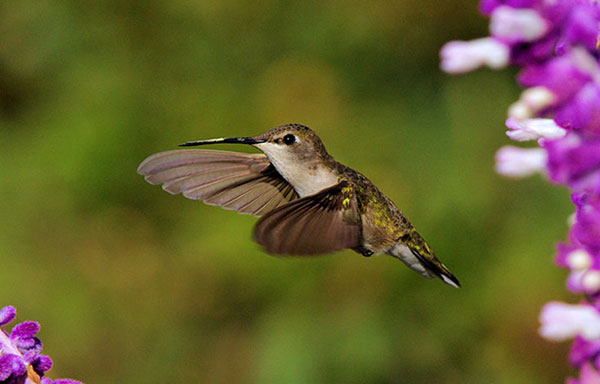
Anna’s Hummingbird
For hovering, the birds have a couple of unique adaptations. Their long chest bone allows for large wing muscles and more muscle connections to flap rapidly during the flight.
This, coupled with a shortened arm bone which enables them to move their wings in the shape of figure eight, allows them to hover, fly both forwards and backward, and gives them exceptional maneuverability.
Fun Facts
- These hummingbirds can shake their bodies 55 times per second to shake off rain, pollen, or dirt.
- During the day, Anna’s Hummingbirds have a body temperature of 107 degrees Fahrenheit. At night, they may become torpid and they’re able to survive cold times by entering a state of torpor which also lowers their body temperature. As the weather and temperature become suitable again, the hummingbird will become active again.
- Male Anna’s Hummingbirds perform steep dives during courtship which can reach 40mph. Their usual flight speed is 25mph and their wings beat around 40-50 times per second.
- The oldest known wild Anna’s Hummingbirds lived for 8 years and 2 months.
Call
Anna’s Hummingbirds make distinctive sounds and their song is quite long for a hummingbird, lasting for about 10 seconds. It starts with buzzing sounds and is intercepted by whistles and chirping.
Anna’s Hummingbird’s call consists of sharp and high-pitched chip notes. They also have a twittering call.
Similar Species
To make identification easier, we have brought out some hummingbirds that can be mistaken for Anna’s Hummingbirds:
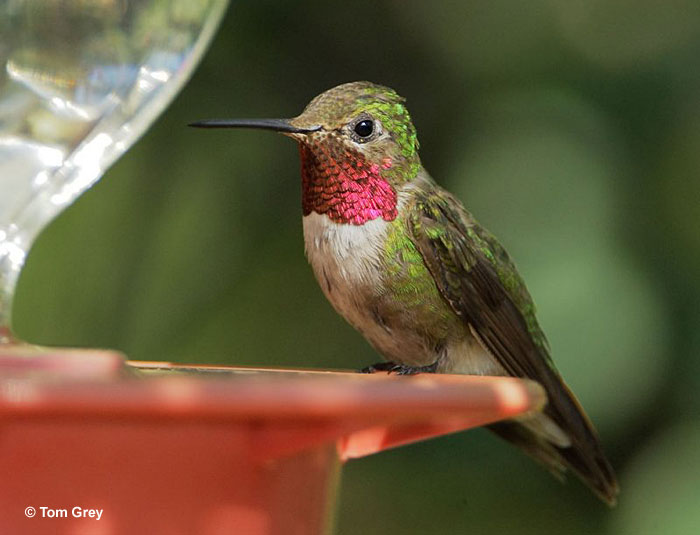
Broad-tailed Hummingbird
Anna’s Hummingbirds and Broad-tailed Hummingbirds look pretty much the same at first sight. Anna’s Hummingbirds have pink on their crown too, whereas Broad-tailed Hummingbirds only have a pink gorget.
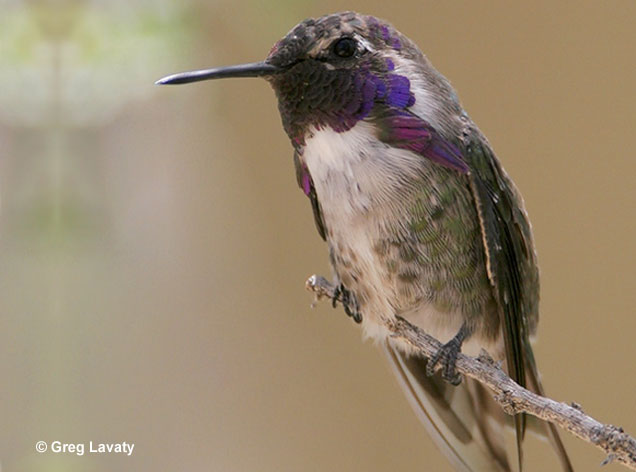
Costa’s Hummingbird
Anna’s Hummingbirds can be mistaken for Costa’s Hummingbirds as well.
They are known for their purple gorgets, whereas Anna’s Hummingbirds have a pinkish gorget.
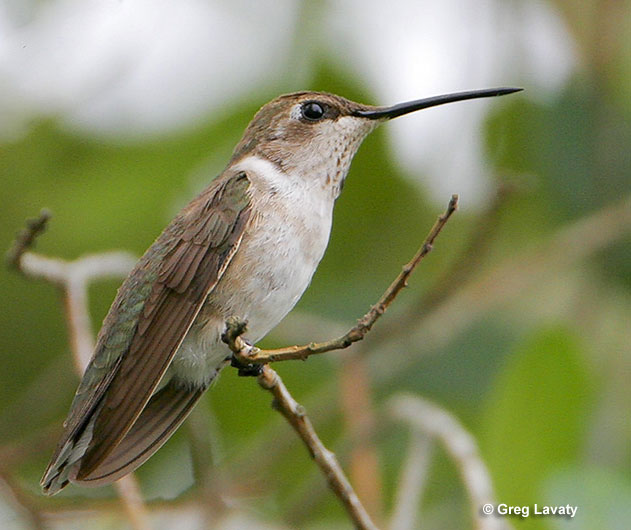
Female Black-chinned Hummingbird
Male Black-chinned Hummingbirds are recognizable by their black gorget, but female species look more similar.
Female Black-chinned Hummingbirds are usually a bit smaller and slimmer than Anna’s Hummingbirds.
Frequently Asked Questions
What’s the difference between an Anna’s Hummingbird and a Ruby-throated Hummingbird?
Male Anna’s Hummingbird has a reddish-pink crown and throat whereas male Ruby-throated Hummingbird has a red throat and black head. Their ranges do not overlap.
Where are Anna’s Hummingbirds found?
Anna’s Hummingbirds are found along the western coast of North America, from northern Canada to the southern United States. They live in open woodlands, chaparrals, parks, gardens, and shrubs.
How long does an Anna Hummingbird live?
Anna’s Hummingbirds can live up to 8 years old.
What trees do Anna’s Hummingbirds nest in?
Anna’s Hummingbirds prefer to nest in eucalyptus trees, oaks, and sycamores. You may also find them nesting in vines, shrubs, and poison oak.

